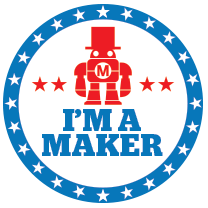After experimenting with the 5 Card Flickr Story this morning, I wanted to try another medium that would allow me to more easily integrate text and images. I was reminded of a free app I had downloaded quite a while ago but never fully explored: Visual Poet.
This app lets you choose three images from Flickr, Google, Tumblr or your own photo library. Once you select an image, you can decide what portion you want to include in your story and then you can tap and add text on top of the image. You can then add a title, auto-insert credits for the photos you use, and add some comments about your story. From the app you can publish directly to Tumblr or you can email the story. The app hasn’t received very good reviews so I’m not sure if it works well on every device but I didn’t have any problems when creating my stories.
I tested two different ways of using the app. First, similar to the 5 Card Flickr Story, I made a story with the first images that came up (See The Cottage below) with I went to search for images. This required some spontaneity and creativity but less reflection.
Then, I tried creating a story with more purpose and forethought. I searched specifically for images relating to ed tech to start my story and then for images that matched ideas relating to where I wanted my story to go (e.g., possibilities, perspective). I consciously sculpted my story, searching for images that I felt could convey the concepts I was looking for without narrowing my search by topic (I used the “Today’s Interesting Photos” option in the Flickr search). This broadened my photo selection to images that I might not have considered otherwise and prompted me to progress down new paths as I developed my story. At first, I imagined my story ending with something about collaboration or sharing but when I saw the camera image, I loved the idea of saying something about the importance of perspective. And so I ended up with a story about ed tech, one that I had a fuzzy idea of when I began and a different understand of when I finished.
Photo Attribution:
Original imagery for panel one by Anonymous/Unknown
Original imagery for panel two by Neighya (Elné)
Original imagery for panel three by danska8
Has anyone else used Visual Poet for digital storytelling? What do you think of this method/medium?

















You must be logged in to post a comment.